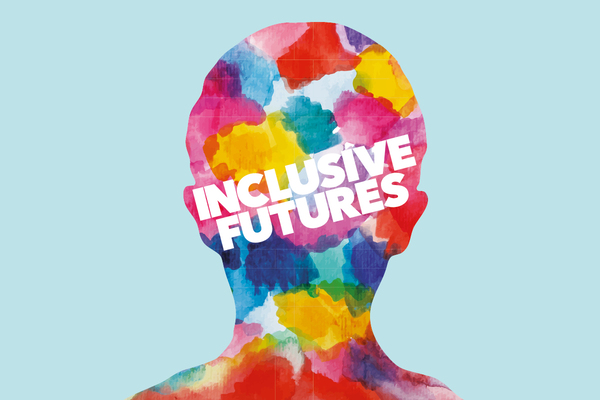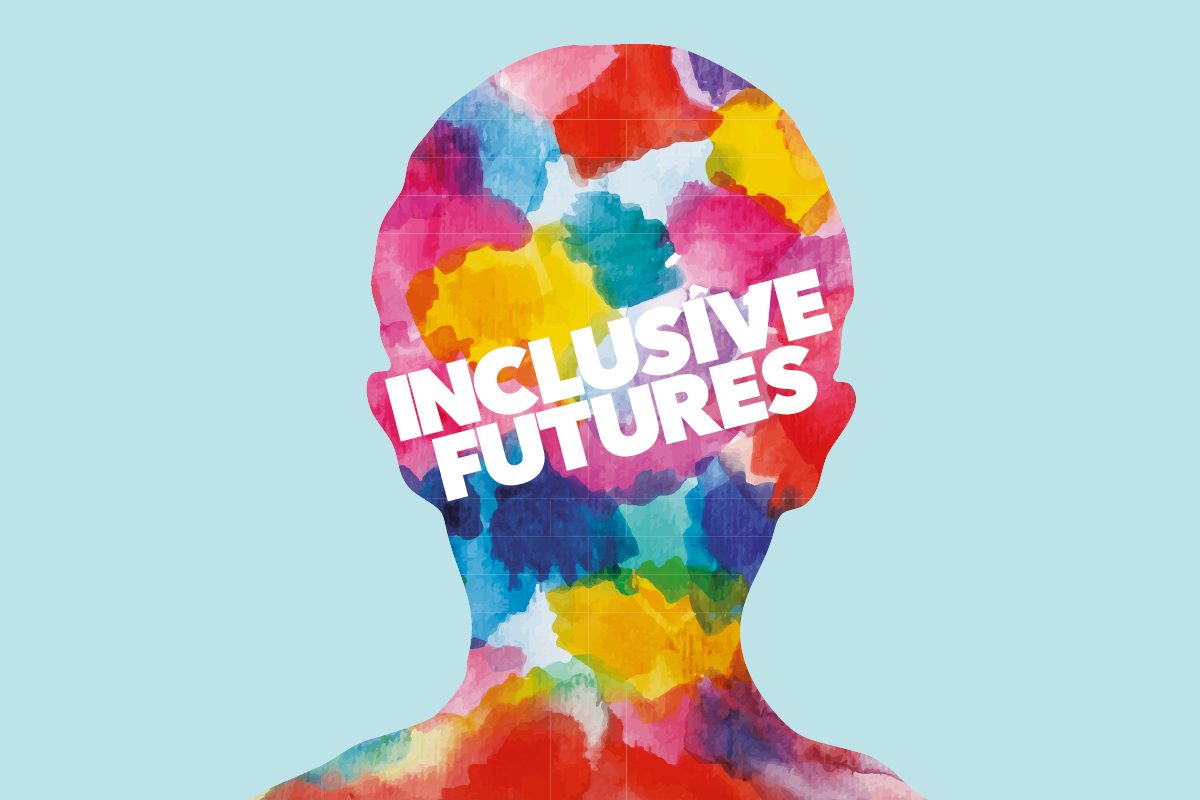You are viewing 1 of your 1 free articles
Closing the gender pay gap: an in-depth analysis of the sector's figures
Kate Youde crunches the numbers on the gender pay gap and asks what steps the sector can take to overcome the issue
Last April, the middle-earning woman at Genesis earned 71 pence for every £1 paid to its middle-earning man.
At Glasgow Housing Association (GHA), it was £1.46 for every £1.
The figures came to light at the end of April when the deadline passed for businesses and charities with 250 or more employees to report their gender pay gap, differences in bonus pay and pay structure under the Equality Act 2010 (Gender Pay Gap Information) Regulations 2017.
Not to be confused with (unlawful) unequal pay, which is paying men and women differently for performing the same or similar work, the gender pay gap is the difference in average hourly earnings for men and women across an organisation.
But what do the figures tell us?
Overall, the picture for housing is positive when compared with that across all sectors.
Of the 50 associations analysed by Inside Housing (see table below), 42 reported a lower median gender pay gap – the difference between the mid-points in the distribution of men’s and women’s pay – than the national average of 18.4%. Of these, two organisations had no median gap and six had a negative gap, meaning women earned more than men when comparing median hourly rates.
Nicola Dibb, founder and executive director of Women in Social Housing (WISH), says the “really positive” results show there is good practice in the sector. “But also there’s some way to go and some improvements to be made,” she adds. “I think it’s about the sector agreeing to work together to advance equality generally and also within pay as well.”
The sector's gender pay gap data
| Housing association | Median gender pay gap (%) | Mean gender pay gap (%) | Proportion of women in top pay quartile ie highest-paid (%) | Proportion of women in upper middle pay quartile (%) | Proportion of women in lower middle pay quartile (%) | Proportion of women in lower quartile ie lowest paid (%) | Proportion of women receiving a bonus (%) | Proportion of men receiving a bonus (%) | Median gender bonus gap (%) | Mean gender bonus gap (%) |
|---|---|---|---|---|---|---|---|---|---|---|
| Genesis*1 | 28.6 | 19.8 | 50 | 62 | 74 | 70 | 0 | 0 | N/A | N/A |
| Housing & Care 21 | 28 | 36 | 77 | 92 | 93 | 95 | 40 | 22 | 0 | -1.5 |
| Viridian*2 | 27.4 | 26.1 | 43.1 | 54.3 | 71.1 | 79.9 | 39.9 | 57.9 | 0 | 82.9 |
| Hanover | 26.2 | 29 | 51.7 | 82.2 | 87.2 | 83.7 | 0 | 0 | N/A | N/A |
| Stonewater | 22 | 23 | 58.1 | 68.9 | 79.2 | 79 | 89 | 72 | 27 | 56 |
| A2 Dominion | 20 | 26 | 46 | 58 | 67 | 79 | 76 | 74 | 0 | 50 |
| Notting Hill Housing Trust *1 | 19.8 | 25.8 | 48.3 | 63.7 | 69.5 | 91.6 | 83.2 | 83.1 | 0 | 2.7 |
| Family Mosaic*3 | 19.4 | 20.1 | 52.5 | 77.3 | 74.1 | 75.8 | 59 | 67.9 | 26.5 | 28.6 |
| Yorkshire Housing | 16.8 | 7.5 | 36 | 54 | 71 | 46 | 10.3 | 3.6 | 0 | -8.4 |
| Bron Afon Community Housing | 16.6 | 8.4 | 28.3 | 30.5 | 49.2 | 48.8 | 0 | 0 | N/A | N/A |
| Your Housing Group | 15.6 | 17.7 | 47.5 | 62 | 67.3 | 65.5 | 0 | 0 | N/A | N/A |
| Midland Heart | 15.5 | 19.2 | 48 | 62 | 58 | 74 | 31.2 | 31.9 | 9 | 91 |
| Metropolitan Housing Trust | 14.8 | 23.3 | 49.4 | 62.2 | 68.4 | 74.9 | 5.2 | 8.5 | 57.1 | 53.7 |
| Gentoo | 14.6 | 11.1 | 28.1 | 24.4 | 55.1 | 52 | 0.8 | 0.5 | 13 | 27.9 |
| Thames Valley | 13.7 | 19.3 | 39.7 | 57.8 | 71.2 | 67.8 | 89.3 | 90.7 | 5.6 | 23.5 |
| Aspire | 12.9 | 8.2 | 38 | 39 | 47 | 47 | 0 | 0 | N/A | N/A |
| Devon and Cornwall Housing Association | 12.7 | 15.1 | 43 | 37 | 62 | 59 | 1.1 | 22.2 | 21.2 | 19.6 |
| Yarlington | 12.5 | 15.4 | 47.7 | 46.5 | 61.6 | 82.4 | 84.3 | 87.1 | 0 | 32.2 |
| Bromford | 11.4 | 7.1 | 44 | 34 | 70 | 63 | 93.4 | 90.8 | 0 | 0.7 |
| Sanctuary | 11.3 | 17.8 | 49 | 62 | 71 | 64 | 1.8 | 2.9 | 0 | -4.1 |
| WDH | 11 | 10.9 | 29.6 | 22.6 | 49 | 60.1 | 95.2 | 94 | 0 | 91.9 |
| Together | 10.5 | 6.4 | 36 | 35 | 47 | 65 | 0 | 0 | N/A | N/A |
| Orbit Group | 10.2 | 19.5 | 39 | 63 | 72 | 57 | 69 | 69 | 15.7 | 23.8 |
| London & Quadrant Housing Trust*4 | 9.5 | 16.6 | 32.6 | 56.7 | 56.9 | 51.9 | 87 | 77 | 12.5 | 25.7 |
| Merlin Housing Society | 8 | 12.9 | 45 | 41 | 51 | 66 | 0.5 | 1.5 | -45 | -32.5 |
| AmicusHorizon*2 | 7.5 | 12.6 | 50.9 | 67.5 | 81.7 | 68 | 89 | 84.3 | 0 | 8.4 |
| Sovereign | 7.2 | 5.2 | 43 | 42 | 40 | 61 | 58 | 61 | 55.2 | 20.8 |
| One Housing Group | 6.4 | 18.8 | 50 | 59.6 | 55.8 | 71.8 | 65.2 | 69.2 | 0 | 46.9 |
| Places for People Homes Ltd *5 | 6.3 | 5 | 40.3 | 31.9 | 29.2 | 58.6 | 2.1 | 1.9 | 91 | 80 |
| Onward Homes | 6.1 | 8.9 | 46.6 | 59.7 | 63.5 | 60.3 | 0 | 0 | N/A | N/A |
| Riverside | 6 | 8.1 | 55.3 | 70 | 70.6 | 61.4 | 74.8 | 76 | 0 | 10 |
| WM Housing | 5.8 | 15.9 | 53.2 | 57.4 | 58.1 | 65.6 | 0 | 0 | N/A | N/A |
| Home Group | 5.3 | 11.9 | 54.4 | 69.1 | 66 | 65.1 | 10.5 | 9.2 | -635.2 | 51.4 |
| Waterloo Housing Group | 4.9 | 12.1 | 58 | 58 | 61 | 50 | 0 | 0 | N/A | N/A |
| Hyde Housing | 4.1 | 12.9 | 46 | 61 | 53 | 64 | 92.9 | 87.8 | 1 | 8.8 |
| Accord | 3.9 | 18.6 | 73 | 86 | 88 | 84 | 0 | 0 | N/A | N/A |
| Plus Dane Housing | 3.4 | -0.5 | 62.5 | 52.4 | 41 | 48.6 | 0 | 0 | N/A | N/A |
| Coast and Country Housing | 2.4 | 4.7 | 42.2 | 36.7 | 52.3 | 51.2 | 0.4 | 0 | N/A | N/A |
| Wrekin Housing Trust | 1.8 | 8.3 | 43.7 | 44.4 | 57.5 | 50 | 3.8 | 2.9 | 29.2 | 11.7 |
| Great Places | 0.4 | 8.4 | 72 | 74 | 75 | 67 | 0 | 0 | N/A | N/A |
| Catalyst | 0.3 | 0.5 | 45.5 | 55.9 | 69.7 | 35.4 | 74.6 | 69.7 | 0 | -0.9 |
| Thirteen | 0.2 | 7 | 44.3 | 53.2 | 26.4 | 71.6 | 0 | 0 | N/A | N/A |
| Paradigm Housing Group | 0 | 9.7 | 40 | 51 | 24 | 73 | 0 | 0 | N/A | N/A |
| Choices Housing Association | 0 | 0 | 84.4 | 84.4 | 81.2 | 88.2 | 30.3 | 45.3 | 0 | 33 |
| Origin Housing | -1.6 | 4.1 | 42.6 | 63.2 | 49.2 | 53.7 | 53.9 | 54.3 | 0 | -2.9 |
| Clarion | -1.8 | 5 | 46.2 | 61.6 | 60.9 | 43.3 | 75.3 | 72.4 | -3.1 | 23 |
| Halton Housing Trust | -4.4 | -3 | 44.6 | 46.7 | 27 | 53.3 | 79.7 | 78.8 | 0 | 0.9 |
| Guinness Partnership | -4.8 | -6.4 | 48.3 | 59.4 | 53.7 | 51.3 | 58.3 | 50 | 0 | 4.3 |
| Peabody Trust *3 | -7.1 | -2.4 | 48.9 | 50.2 | 58.3 | 26.5 | 79.8 | 75.6 | 0 | 14.2 |
| Glasgow Housing Association | -45.9 | -25 | 57.5 | 66.2 | 21.7 | 16.5 | 0 | 0 | N/A | N/A |
NOTES:
*1 Genesis and Notting Hill Housing merged in April 2018 *2 Viridian and AmicusHorizon amalgamated in May 2017 *3 Family Mosaic is part of Peabody following a merger in July 2017 *4 These are figures submitted the London & Quadrant Housing Trust. The overall median pay gap for the three companies that make up the L&Q Group is 15.7%. *5 These are figures submitted for People for Places' regulated housing activities. Information on its website suggests the overall median gender pay gap across the group is -5.5% Note- a minus gap means women are paid more than men
Despite outperforming the national average, housing is nonetheless a man’s world: men’s median hourly rates are higher than women’s at 42 of 50 organisations.
The majority of the highest-paid employees are also men: the proportion of women in the top pay quartile is only greater than that of men at 14 organisations. A further two landlords have a 50/50 split between male and female workers in this quartile.
By contrast, most of the lowest-paid employees are women: eight in 10 associations have a higher proportion of female than male workers in their lower pay quartile. A further two have a 50/50 split. Women outnumber men in the upper-middle and lower-middle pay brackets.
There are significant variations between associations. Genesis, which merged with Notting Hill Housing earlier this month, reported a median gap of 28.6% while, at the end of the scale more favourable to women, GHA had a -45.9% gap.
John Gray, branch secretary for the London housing association branch at Unison, where membership is about 70% female, says the results are unsurprising but adds: “Housing organisations are predominantly women so we don’t think any organisation should have massive variations in this.”
He suggests having a predominately female workforce – as many care organisations do – is not a valid excuse for a gender pay gap. “They are selecting [and] promoting predominantly men into senior positions,” he says. He adds that if the union finds people are being paid differently for equal work, it would be the foundation for possible legal action.
“Poor performers need to have their cage rattled and local authorities can play a role in this.” - John Gray, Unison
Mr Gray hopes councils, which can take social value issues into account when entering partnership arrangements, will ask for gender pay gap data. “The poor performers need to have their cage rattled and certainly local authorities can play an important role in this,” he says.
GHA declined to speak to Inside Housing so it is unclear whether the association wants to tip the scales back towards men. However in a statement published with its figures, group director of finance Steven Henderson said “family-friendly policies and flexible working” had helped the association attract and retain women, but that it aimed to attract more women into environmental roles. Men make up the majority of GHA’s lower-earning staff because the neighbourhood environmental teams – providing concierge services and ground maintenance – are 97% male.
He said the organisation also needed to do more to attract men into housing officer positions.
Many area housing managers, part of GHA’s top pay quartile, had been promoted from its teams of housing officers, which are 72% female.
Click here to read more about our Inclusive Futures campaign
When explaining its gender pay gap, Genesis referenced its workforce having more women – 64% compared with 36% men – and that more than half its staff worked in care and support, which also had a high concentration of women.
Vipul Thacker, group director for central services at the newly formed Notting Hill Genesis, says what the organisation pays care and support workers is impacted by external market factors. “It’s traditionally a sector that attracts women and lower-paid staff,” he adds.
He says Notting Hill Genesis is “committed to the principle of equal opportunities” and is confident the gender pay gap of its two legacy organisations does not stem from unequal pay. It has committed to conduct an equal pay audit.
Other steps the organisation is taking include a pilot in care and support to encourage staff to take up learning and development opportunities and a review of its recruitment process to try and attract more women to senior positions. It also has a women’s network to identify talent and arrange mentoring.
“We know it’s not something we can solve on our own,” says Mr Thacker. “We have to learn from others.”
The only organisation of the 50 to report neither a median or mean gender pay gap – Choices Housing Association – also operates in the care sector and has a predominantly female staff. So what can other landlords learn from its approach?
In numbers
42
Number of associations where men’s hourly rate was higher than women’s, out of a total of 50
18.4%
National average pay gap
7.8%
Housing association pay gap
Choices did not respond to an interview request but a report accompanying its figures states it works hard “to break down the barriers of occupational segregation”.
Nina Evison, director of people at Catalyst, says it has only a 0.3% median gender pay gap because it is “part of our DNA to be completely inclusive in how we recruit and how we promote people into roles”. “I think it’s a reflection of our long-term approach to equality, diversity and inclusion,” she says, adding that it helps having a 50/50 male/female executive split so there isn’t an issue at the top that may filter down the organisation. Catalyst has more men at the very top and very bottom of the organisation, however, and is focusing on understanding why it attracts more applications from men than women for caretaker and gardening roles.
Barbara Spicer, chief executive of Plus Dane Housing, which has a median gap of 3.4%, says organisations need to “get behind” gender pay gap data to understand any barriers and unconscious bias. “It’s only one cut on who we employ but it does make you think quite differently about why and how we have ended up with these figures,” she says. Plus Dane, which has 62.5% women in its top pay quartile, found only 13% of its trade staff are women. As a result, it has “sharpened” its focus on getting more women into trades, partly by working with the education sector to widen the skills pool.
The Equality and Human Rights Commission (EHRC) is responsible for ensuring employers publish their gender pay gap information. It has written to approximately 1,500 employers – it is not yet known whether this includes housing associations – across all sectors that did not report their figures by the deadline and has given them 28 days to comply before an investigation. Ultimately, failure to comply could lead to an unlimited fine decided by the courts.
“If their gender pay gap is wide, what else does that say about that organisation?” - Nicola Dibb, Women in Social Housing (WISH)
Earlier this month, a cross-party group of MPs launched #Paymetoo to tackle the gender pay gap. The campaign urges employees to talk to co-workers about pay, their manager about their employer’s plan to address any gender pay gap, and union reps about their action on pay equality. It also suggests they take the issue to their women’s network and share their experiences via the group’s anonymous survey, which will help inform debates in parliament.
Women can also vote with their feet. “If you go for a job at a particular organisation and you know their gender pay gap is quite wide, then that would be a cause for concern because what else does that say about that organisation in the way they consider women and… promote women, or see the value they bring?” says Ms Dibb, who is also land and planning manager at Crown Simmons Housing. “Is it evidence of a culture within that organisation?”
Neither the Chartered Institute of Housing (CIH) nor the National Housing Federation put forward anyone to speak to Inside Housing for this piece.
Ms Dibb suggests there is “a lack of leadership” on the issue, which could be because it is the first time the gender pay gap information has been reported. “Maybe it will act as a trigger for organisations like the CIH and the National Housing Federation to take that on board and say, ‘What can we do about it?’.”
WISH could campaign on the gender pay gap, and is looking to launch a mentoring scheme to help women into senior positions.
Plus Dane’s Ms Spicer says prevailing cultures need to change and what is really important is what associations do next on the gender pay gap. “It would be such a shame if we published the figures and there was a couple of articles, then people forgot about it until next year,” she says. “That would be a lost opportunity.”
Gender pay reporting explained
Under Equality Act regulations, employers (including housing associations) with more than 250 employees have until 4 April to publish information about their gender pay on their website and on a government website.
An employer must publish the results of six calculations for pay over a 12-month period:
- average gender pay gap as a mean average
- average gender pay gap as a median average
- average bonus gender pay gap as a mean average
- average bonus gender pay gap as a median average
- proportion of males receiving a bonus payment and proportion of females receiving a bonus payment
- proportion of males and females when divided into four groups ordered from lowest to highest pay.
The regulations specify how hourly pay, bonus pay and hourly rate should be calculated and in what circumstances agency workers and self-employed people should be included in the calculations
Results for individual organisations can be found on the government's gender pay reporting website here. Find results for housing providers by using the search boxes, or by filtering by sector.
Inclusive Futures
Inside Housing’s Inclusive Futures campaign aims to promote and celebrate diversity and inclusion.
We are pledging to publish diversity audits of our own coverage.
We are also committed to proactively promoting positive role models.
We will do this through the pages of Inside Housing. But we will also seek to support other publications and events organisations to be more inclusive.
Our Inclusive Futures Bureau will provide a database of speakers and commentators from all backgrounds, for use by all media organisations.
We are also challenging readers to take five clear steps to promote diversity, informed by the Chartered Institute of Housing’s diversity commission and the Leadership 2025 project.
INSIDE HOUSING’S PLEDGES
We will take proactive steps to promote positive role models from under-represented groups and provide information to support change.
We pledge to:
Publish diversity audits: We will audit the diversity of the commentators we feature. We will formalise this process and publish the results for future audits twice a year.
Promote role models: We will work to highlight leading lights from specific under-represented groups, starting in early 2018 with our new BME Leaders List.
Launch Inclusive Futures Bureau: We will work with the sector to compile a database of speakers, commentators and experts from under-represented groups. The bureau will be available to events organisers, media outlets and publications to support them to better represent the talent in the sector.
Take forward the Women in Housing Awards: Inside Housing has taken on these successful awards and will work to grow and develop them.
Convene Inclusive Futures Summit: Our new high-level event will support organisations to develop and implement strategies to become more diverse and inclusive.
THE INCLUSIVE FUTURES CHALLENGE
Inside Housing calls on organisations to sign up to an inclusive future by taking five steps:
Prioritise diversity and inclusion at the top: commitment and persistence from chief executives, directors and chairs in setting goals and monitoring progress.
Collect data on the diversity of your board, leadership and total workforce and publish annually with your annual report. Consider gender, ethnicity, disability, sexuality, age, and representation of tenants on the board.
Set aspirational targets for recruitment to the executive team, board and committees from under-represented groups.
Challenge recruiting staff and agencies to ensure that all shortlists include candidates from under-represented groups.
Make diversity and inclusion a core theme in your talent management strategy to ensure you support people from under-represented groups to progress their careers.















